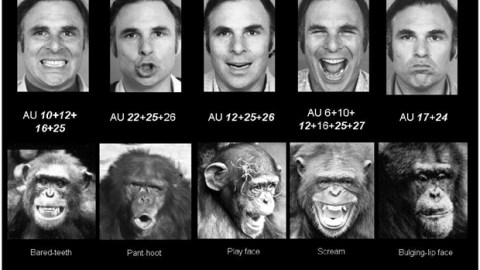Reading the Seven Universal Expressions

The human face is a universal signal system. In fact, it is the most precise signal system we have for our emotions. We can read seven different emotions and we can read whether they’re being falsified or whether they are genuine expressions.
These emotions are:
Anger
Fear
Sadness
Disgust
Enjoyment
Surprise
Contempt
As renowned psychologist Paul Ekman explains, each of these emotional words stands for a family of feelings. Consider anger, for instance, the emotion that most often gets us into trouble. Anger varies in strength. We can be mildly annoyed, or we can experience full-blown rage.
We also experience different types of anger. We can be indignant. We can be resentful. We can sulk. We can be passive-aggressive. In total, there are more than 100 different expressions on the face that signal variations in anger. All of those signals can be learned.
In a new 5-part workshop on Big Think Mentor, Ekman introduces viewers to key principles and techniques for mastering the art of reading emotions. Ekman also has us consider the ethical responsibilities that come with the ability to read emotions that someone is trying to conceal or otherwise might not be aware of. He also introduces viewers to some principles and techniques for becoming more aware of your own emotions and reactions.
Sign up for a free trial of Big Think Mentor and learn more about microexpressions and other non-verbal communications here:
Why was the universality of emotions so important to Charles Darwin? According to Ekman, Darwin thought that shared emotions and expressions demonstrated “the basic humanity” of all human beings. “That’s what links us together,” Ekman explains. “That was very important to [Darwin] to counter the racists of his times who were claiming in the 19th century that Caucasians had descended from a more advanced progenitor than Africans.”
Darwin published his thoughts in the book The Expression of Emotion in Man and Animals, published in 1872. Darwin had no evidence to support his claim. That’s where Ekman jumped in, and proved the existence of “one of the most important things we all have.”
How important are our facial expressions and why did they evolve the way they did? Let’s say you are being chased by a saber toothed tiger. “If you had to think about what you were doing,” Ekman says, “you’d be dead. So it’s a system that evolved to deal with really important things without your thinking about it.”
So how do our facial expressions help us in such an instance? One of Ekman’s most important ideas is that the face is not just “a display system” that communicates what we feel, it can also generate emotions. In other words, “if you put on your face one of the universal expressions,” Ekman says, “you will turn on the physiology of emotion. You will begin to experience that emotion.”





